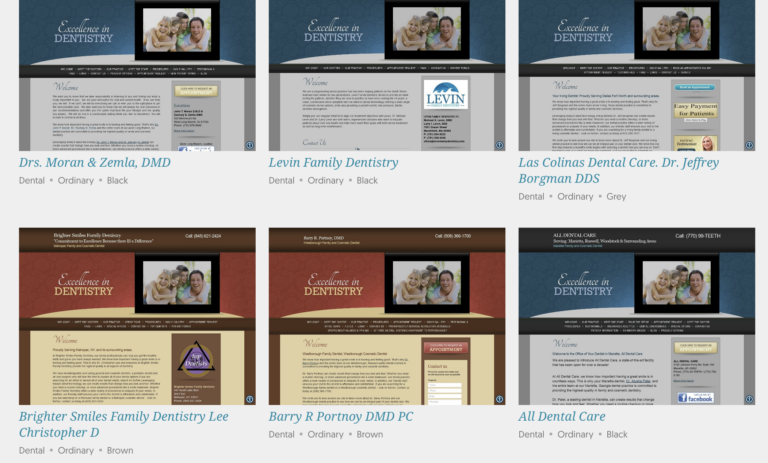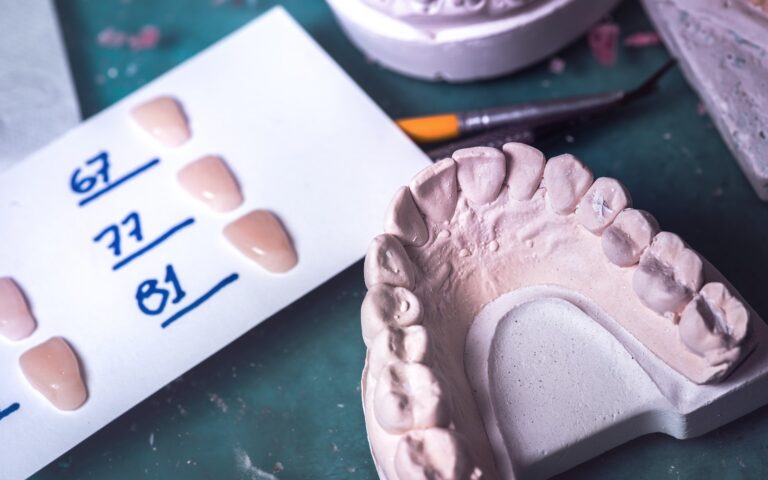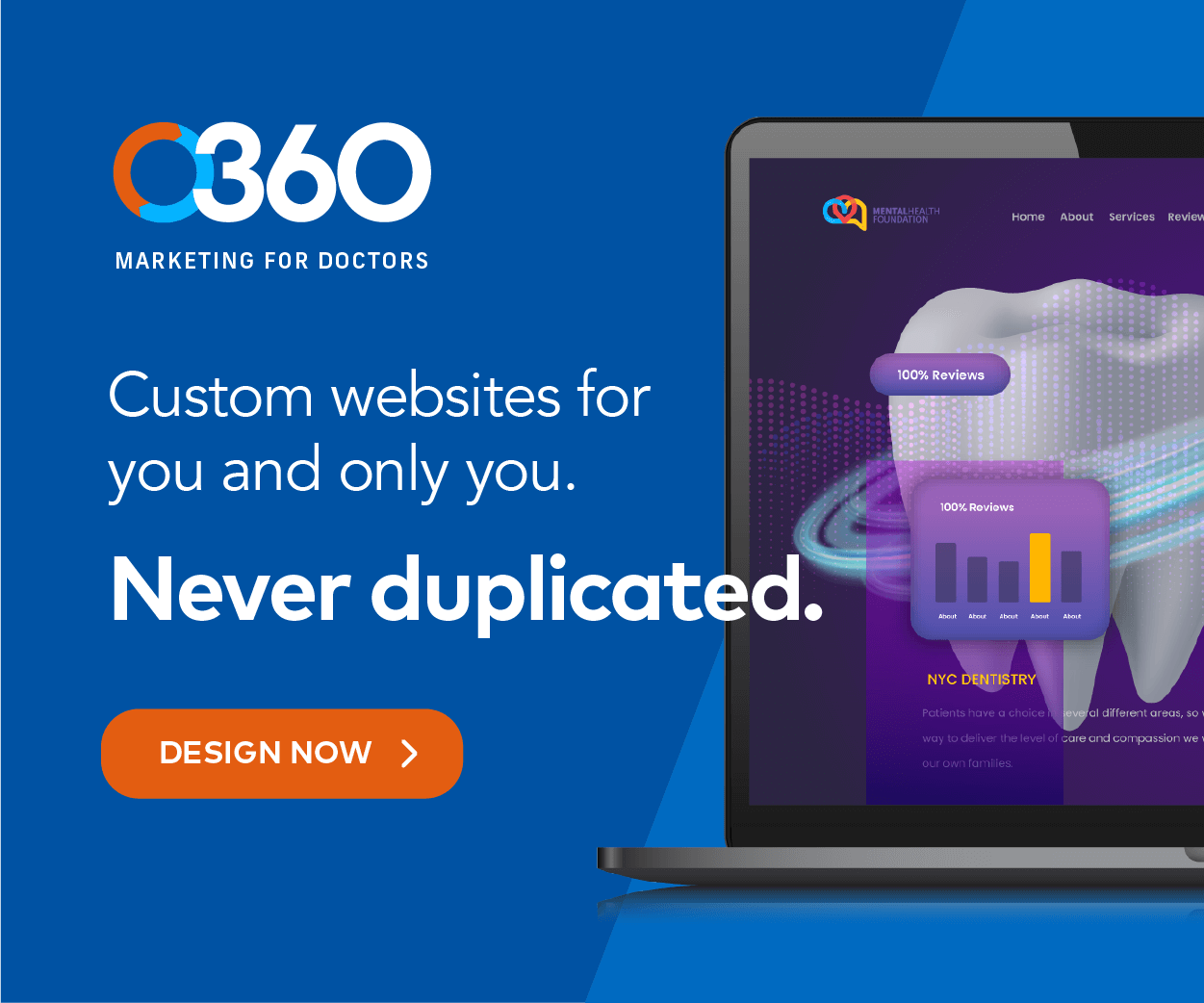As a healthcare professional, when it comes to your online presence, you have two options for developing your site. You can use a website builder that works based on templates and customizing them, or you can hire a developer to build a website for your healthcare practice from scratch.
Here is an example of a dental website where the owners chose a template solution.

Comparing template websites with custom designs
| Features | Template Websites | Custom Designed Websites |
|---|---|---|
| Cost | Generally low-cost, with prices ranging from free to around $499/m. | Higher initial cost, often several thousand dollars, is due to labor-intensive design and coding. |
| Design Flexibility | Limited flexibility. Design elements are pre-determined and difficult to modify. | High flexibility. Design elements can be tailored to match the specific requirements of the client. |
| Scalability | Limited scalability. As a business grows, a template may not accommodate new requirements. | High scalability. It can be built and modified to grow and evolve with a business. |
| Unique Design | Generic designs are used by hundreds or thousands of other websites. | Unique designs that can set a website apart from competitors. |
| Technical Support | Free templates often lack technical support. Paid templates might offer some support. | The design team typically provides a high level of technical support. |
| Time Investment | Less time-intensive, as the basic structure is already created. | More time-consuming, as every detail needs to be designed and coded from scratch. |
| SEO Optimization | Typically lacks strong SEO optimization capabilities. | SEO optimization is better with custom sites due to the technical expertise of developers. |
| Performance & Functionality | Standard performance may have limitations on user traffic or functionality. | Custom-built for high performance, with no limitations on user traffic or functionality. |
Template vs. Custom Design

Let’s review what a template is and what a custom design provides. Templates, often called themes, are websites that have been pre-designed and replicated hundreds, even thousands of times. Templates may include very basic and generic images and photographs but typically no content. Such templates do not provide much in the way of design flexibility or scalability; it’s often ‘the way it is, is the way it is’. Think of a template as a fast-food approach to your website’s design. Your website may look and perform just like the doctor practicing next to you.
On the expensive side, templates and themes are priced anywhere from a few dollars to $500 monthly. There are a few free healthcare template options too. While opting for a free template to cut costs may be tempting, this can be counter-productive. Free templates often come with quite a few issues in the form of poor quality standards, and they can be void of any technical support when you encounter issues or questions.
Paid templates generally provide fair support and are often coded by expert developers. These paid templates can also help you to spend less time struggling over the design of your website, the time that you can spend focusing on your service. A template-based website might seem like an acceptable solution for your current needs, but what happens when your practice grows, and your requirements grow accordingly?
On the other hand, a custom website is literally that – custom designed, custom coded, and built for a single healthcare practice. Your designer or design team will spend the necessary time with you to understand what you’re seeking in your website’s look, feel, experience, and performance before a line of code or a single-pixel is put in place. Just like any art or creative expression, custom websites often take inspiration from another custom website, but the similarities stop there. Custom websites, by this definition, are labor-intensive and thus carry a substantial cost differential over pre-designed and duplicated templates – often several thousands of dollars higher.
A custom website provides the doctor with the flexibility to work within a budget and add features as you may need them. Your design team will build the site to cater specifically to your current objectives while ensuring that the site is scalable as your dental or medical practice evolves and grows. Custom websites have no limitations on the features, performance, or scale of user traffic they can handle without sacrificing functionality.
As a healthcare professional, you most likely can quickly learn how to build a website using a template. But you should first ask yourself this question:
Do you have the time?
Not only time to build it but also the time to update it regularly. Nothing is sadder than finding a website for a health professional whose most current entry is a blog post from two years ago – it is also unprofessional.
The framework or skeleton of your site is not too hard to understand. But getting the flesh and muscles that keep a site functioning as designed to attract and keep searchers engaged is more of an art than a learned skill.
Successful, professionally designed healthcare websites are costlier than a template website, at least to get started. But the cost is the wrong metric for evaluating your site. The proper measure is ROI. Several studies show that custom websites have a higher ROI than pre-built template websites. This is especially true in medicine, where patients care more about quality and attention to detail, vs. an eCommerce website.
Also, consider that search engine optimization is better in custom-built websites. Website developers who build websites from scratch will have the technical knowledge to ensure your site is highly optimized for Google and Bing.
How to Spot a Template Website
Can you tell that you’re eating a cookie from an off-the-shelf, plastic-wrapped package and that it’s not a fresh cookie handmade in grandma’s kitchen? Of course, you can. That’s an easy way to spot a template healthcare website from a custom-designed site. Template sites often try too hard to look custom, and a surefire way to spot a template site is their extreme reliance on overused stock images. Don’t get us wrong, we utilize stock images for our clients, too, but use the same images again and again of perfect-looking families, seniors, and kids. Face it, you and your patients don’t look like these models, but you’ll certainly find them on a template website.

There is also a technical way to spot a template website. You can easily peek inside the website’s code in your browser and identify a few traits of template or theme-based websites.
- In Google Chrome, Open the site, go to the “Tools” menu, and select “View Source”; alternatively, hit Ctrl + U.
- In Apple Safari, Internet Explorer, or Mozilla Firefox: Right-click on the website and choose “View Page Source.”
Scan the page for the word ‘themes’, typically found right after /wp-content/. This will indicate the name of the theme the website may be using. You can then use your favorite search engine to look up that theme and possibly find other websites using it online.
There is also a handy search tool for identifying certain WordPress themes. Head on over to ‘What WordPress Theme Is That’. This free online tool allows you to easily detect what WordPress theme a website uses (including its parent and child themes). Additionally, it will also detect what WordPress plugins are being used.
How to Spot a Duplicated, Template-Based Website

Conclusion
Custom websites certainly offer the most flexibility in design, functionality, and performance. At the same time, template-driven sites can be a good solution for small practices hoping to establish a web presence quickly and affordably. When you’re shopping for your next website, if the price is suspiciously low, it’s a template. If you’re being provided a feature you didn’t ask for or don’t need, it’s a template. If the design process prevents you from speaking with a designer or a developer, it’s a template.
Your website is meant to be a productive marketing tool used to attract, capture and recruit new patient opportunities for your practice. You’ll want your website to reflect exactly who you are, your brand value, and the quality of services you provide to the community. Your website should be seen as an investment in your practice, and if it’s treated like one, you’ll be making a great decision!
If you want to develop a custom website for your healthcare practice, check O360, the #1 website developer in healthcare.














